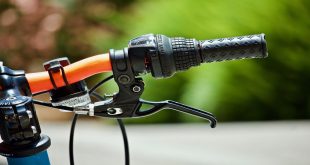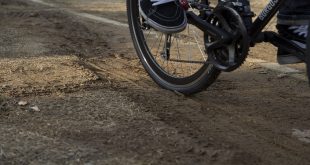Hybrid bikes are not inherently faster than mountain bikes; the speed of both bikes depends on various factors, such as the terrain and rider’s ability. However, hybrid bikes generally offer better speed on flat or paved surfaces, while mountain bikes excel in rough off-road terrains, giving them an advantage in certain situations.
Hybrid bikes and mountain bikes are two popular choices for cycling enthusiasts, each with its own unique features and advantages. However, the question of which one is faster often arises when comparing the two. While it is important to note that speed is subjective and can vary depending on several factors, including the terrain and the rider’s ability, understanding the key characteristics of both bike types can shed light on their respective speed capabilities.
We will explore whether hybrid bikes are faster than mountain bikes and delve into the factors that contribute to their speed on various terrains.
Understanding The Differences Between Hybrid Bikes And Mountain Bikes
When it comes to choosing the ideal bicycle for your needs, understanding the differences between hybrid bikes and mountain bikes is key. Both types of bikes have their unique features and design aspects, as well as different applications in various terrains. In this article, we will explore the key features and design aspects of hybrid bikes and mountain bikes, as well as how they are used in different terrains.
Key Features And Design Aspects Of Hybrid Bikes
Hybrid bikes, as the name suggests, offer a combination of features from road bikes and mountain bikes. They are designed to provide a versatile riding experience, suitable for both urban commuting and light off-road trails. Here are the key features and design aspects of hybrid bikes:
- Frame: Hybrid bikes usually have a lightweight aluminum frame that offers a comfortable riding position. The frame geometry is more upright compared to mountain bikes, providing better visibility in urban environments.
- Tires: Hybrid bikes come with medium-width tires, typically ranging from 28mm to 42mm in width. These tires strike a balance between rolling efficiency on pavement and grip on light trails.
- Suspension: Most hybrid bikes do not feature suspension forks or rear suspension. Instead, they prioritize efficiency and lightweight design.
- Gearing: Hybrid bikes often have a wide range of gears, allowing riders to comfortably tackle both uphill climbs and flat roads.
- Brakes: Hybrid bikes commonly feature linear-pull or disc brakes, providing reliable stopping power in various conditions.
Key Features And Design Aspects Of Mountain Bikes
Mountain bikes are specifically designed for off-road adventures, offering superior performance and durability on rough terrains. Here are the key features and design aspects of mountain bikes:
- Frame: Mountain bikes have a sturdy frame, usually made from aluminum or carbon fiber, that can withstand the impacts and vibrations encountered on trails.
- Tires: Mountain bikes come with wide, knobby tires that provide excellent traction and control on uneven surfaces.
- Suspension: Most mountain bikes feature suspension forks to absorb shocks and enhance comfort during jumps, drops, and rough descents. Some mountain bikes also have rear suspension, called full suspension bikes.
- Gearing: Mountain bikes typically have a wide range of gears to handle steep climbs and rapid descents. They often come with a higher number of gears compared to hybrid bikes.
- Brakes: Mountain bikes commonly use disc brakes, which offer consistent stopping power even in wet and muddy conditions.
How Hybrid Bikes And Mountain Bikes Are Used In Different Terrains
Understanding the terrain where you plan to ride is crucial in choosing between a hybrid bike and a mountain bike. While hybrid bikes are versatile and suitable for a wide range of terrains, mountain bikes excel in rough and challenging off-road trails. Here’s how these bikes are used in different terrains:
| Hybrid Bikes | Mountain Bikes |
|---|---|
| Urban streets and bike paths | Narrow and technical mountain trails |
| Light gravel and dirt roads | Rocky, rough, and steep trails |
| Smooth paved surfaces | Roots, logs, and other obstacles |
Ultimately, the choice between a hybrid bike and a mountain bike depends on your intended use and personal preference. Hybrid bikes offer a versatile and comfortable riding experience, suitable for a mix of urban commuting and light off-road adventuring. On the other hand, mountain bikes are built to handle the challenges of off-road trails, providing superior traction, suspension, and durability. Consider the terrain in which you will be riding and choose the bike that best suits your needs and preferences.
Evaluating Speed Factors For Hybrid Bikes And Mountain Bikes
When it comes to evaluating the speed of hybrid bikes and mountain bikes, several factors come into play. Both types of bikes have distinct features that contribute to their overall speed on different terrains. In this article, we will delve into the key speed factors for hybrid bikes and mountain bikes. By understanding these factors, you can make an informed decision about which bike is best suited for your riding style and preferences.
Factors That Contribute To Speed In Hybrid Bikes
Hybrid bikes are designed to be versatile, combining the features of road bikes and mountain bikes. This allows riders to enjoy a smooth and efficient ride on various terrains. Here are the key factors that contribute to the speed of hybrid bikes:
1. Lightweight Frame Materials
The weight of the bike plays a crucial role in determining its speed. Hybrid bikes often use lightweight frame materials, such as aluminum or carbon fiber, in order to reduce overall weight. These materials provide the necessary strength while keeping the bike light, making it easier to accelerate and maintain higher speeds for longer durations.
2. Efficient Riding Position
The riding position on a hybrid bike is typically more upright compared to a road bike, but not as upright as a mountain bike. This allows riders to strike a balance between aerodynamics and comfort. By maintaining a slightly forward-leaning posture, cyclists can minimize wind resistance and increase speed. The ergonomically designed handlebars also contribute to a more efficient riding position, allowing for better control and power transfer.
3. Gear Ratios and Drivetrain Setup
The gear ratios and drivetrain setup of a hybrid bike are optimized to provide a wide range of gear options. This allows riders to easily switch between different gear combinations for different terrains and riding conditions. With the right gear ratio, cyclists can find the optimal balance between speed and pedaling efficiency, ensuring a smooth and swift ride.
Factors That Contribute To Speed In Mountain Bikes
Mountain bikes are specifically designed for off-road trail riding, where speed and maneuverability are essential. Here are the key factors that contribute to the speed of mountain bikes:
1. Suspension Performance and Travel
Mountain bikes are equipped with suspension systems to absorb the impact of rough terrains. The suspension performance and travel play a crucial role in maintaining speed and control. A well-tuned suspension system ensures that the wheels maintain traction on uneven surfaces, enabling riders to maintain momentum and speed through technical sections of the trail.
2. Tread Design and Tires
The tread design and tires of a mountain bike significantly affect its speed and grip on different terrains. Aggressive and low-profile tread patterns are commonly used to maximize speed and minimize rolling resistance on smoother surfaces. Additionally, the choice of tire width and compound can also impact speed. Narrower tires with a harder compound are generally faster on hard-packed trails, while wider tires with softer compounds provide better traction on loose or muddy surfaces.
3. Frame Geometry and Weight Distribution
The frame geometry and weight distribution of a mountain bike are carefully engineered to enhance speed and stability. The geometry determines the bike’s handling characteristics, with designs optimized for agility and speed. Additionally, the weight distribution between the front and rear of the bike affects its stability at high speeds and during technical maneuvers.
In conclusion, the speed potential of hybrid bikes and mountain bikes can be evaluated by considering the specific factors that contribute to their performance. Lightweight frame materials, efficient riding position, and optimal gear ratios are key speed factors for hybrid bikes, while suspension performance, tread design, and frame geometry are crucial for mountain bikes. By understanding these factors, you can make an informed decision when choosing the right bike for your needs.
Comparing Speed Performance Of Hybrid Bikes And Mountain Bikes
Are you in search of a bike that can provide you with the best speed performance? If so, it’s essential to know the key differences in speed capabilities between hybrid bikes and mountain bikes. While both of these bike types offer their own unique advantages, their speed performance can greatly differ based on various factors.
Speed Capabilities Of Hybrid Bikes
Hybrid bikes are designed to offer a balance between on-road and off-road riding. When it comes to speed, hybrid bikes can give you a swift and efficient performance on city roads or bike paths. They are equipped with lightweight frames and slick tires, which reduce rolling resistance and enhance speed. With their upright riding position and efficient pedaling system, hybrid bikes are built for paved surfaces, allowing you to cruise comfortably at higher speeds.
On-road performance and efficiency
The on-road performance of hybrid bikes is remarkable, thanks to their smooth tires and lightweight construction. These bikes are engineered to optimize speed and efficiency on flat and well-paved roads. Whether you’re commuting to work or enjoying a leisurely ride around your neighborhood, hybrid bikes excel in providing a fast and smooth experience.
Factors that may limit top speed
Despite their impressive speed capabilities, hybrid bikes may have limitations when it comes to reaching top speeds. Factors such as the bike’s weight, tire width, and overall design can affect speed. Additionally, the gear ratios on hybrid bikes are often optimized for efficient pedaling and comfortable cruising rather than achieving maximum speed.
Speed Capabilities Of Mountain Bikes
While hybrid bikes are built for versatility, mountain bikes are specifically designed to handle off-road terrains and challenging trails. Their speed capabilities are tailored for rugged paths, making mountain bikes great for adventurous riders who prefer dirt trails, mountains, and rough terrains.
Off-road performance and agility
When it comes to off-road performance, mountain bikes really shine. With their durable frames, suspension systems, and knobby tires, these bikes provide the agility and control needed for tackling unpredictable terrains. Although mountain bikes may not match the same speed as hybrid bikes on city roads, their ability to navigate through rocky trails and steep slopes makes them a top choice for off-road enthusiasts.
Factors that may limit top speed
While mountain bikes excel in off-road performance, their top speed on smooth surfaces may be limited. The wide and knobby tires, along with their heavier weight and suspension systems, can create additional rolling resistance, which may slow down the bike’s top speed. However, it’s important to remember that the primary focus of mountain bikes is maneuverability and stability rather than straight-line speed.
In conclusion, when considering speed performance, hybrid bikes and mountain bikes each have their strengths. Hybrid bikes offer excellent on-road performance and efficiency, while mountain bikes excel in off-road agility. To make the best choice for your needs, prioritize the type of terrain you’ll be riding on, as well as the specific speed requirements you desire. Whether you prefer the speed of a hybrid bike or the ruggedness of a mountain bike, both can provide an enjoyable riding experience for different purposes.
Discussing The Pros And Cons Of Hybrid Bikes And Mountain Bikes In Terms Of Speed
When it comes to choosing the right bike for your needs, speed plays a crucial role. Hybrid bikes and mountain bikes are two popular options, each designed for different terrains and riding styles. In this section, we will discuss the advantages and disadvantages of hybrid bikes and mountain bikes in terms of speed. Understanding these differences will help you make an informed decision about which type of bike is better suited for your riding preferences.
Advantages Of Hybrid Bikes For Faster On-road Riding
When it comes to faster on-road riding, hybrid bikes have several advantages over mountain bikes. Let’s explore these advantages:
Improved aerodynamics and efficiency
Hybrid bikes are built with aerodynamics in mind, allowing riders to cut through the wind more efficiently. The sleek design and narrower tires reduce drag and resistance, enabling riders to pedal faster and maintain higher speeds.
Lower rolling resistance on paved surfaces
Hybrid bikes are typically equipped with slick or semi-slick tires, which offer lower rolling resistance on paved surfaces. This means less effort is required to maintain speed, making them ideal for urban commutes or long-distance rides on roads and bike paths.
Advantages Of Mountain Bikes For Off-road Speed And Maneuverability
While hybrid bikes excel on paved surfaces, mountain bikes offer distinct advantages when it comes to off-road speed and maneuverability. Here are some reasons why:
Better traction and control on rough terrains
Mountain bikes are specifically designed to handle rough and uneven terrains. They come with wider, knobby tires that provide excellent traction, allowing riders to maintain control and stability even on loose gravel or muddy trails. This enhanced grip translates to faster speeds and more confidence when riding off-road.
Suspension system for absorbing impacts
Off-road trails can be filled with bumps, rocks, and other obstacles that can slow down a rider. Mountain bikes are equipped with suspension systems, either front suspension or full suspension, which help absorb impacts and provide a smoother ride. This not only improves comfort but also allows riders to maintain speed while traversing uneven terrain.
Ultimately, the choice between a hybrid bike and a mountain bike depends on your specific needs and preferences. If you primarily ride on paved roads and prioritize speed, a hybrid bike is likely the better option. On the other hand, if you enjoy off-road adventures and need a bike that can handle rough terrains with ease, a mountain bike will suit you best. Consider the advantages and disadvantages discussed here to make an informed decision and enjoy your rides to the fullest!
Factors To Consider When Choosing Between Hybrid Bikes And Mountain Bikes For Speed
Are you in search of a bike that combines speed with versatility? Choosing between a hybrid bike and a mountain bike can be a tough decision, especially when it comes to speed. While hybrid bikes excels in certain conditions, mountain bikes are built specifically for off-road adventures. To help you make the right choice, here are some factors to consider when deciding between hybrid bikes and mountain bikes for speed.
Riding Preferences And Terrain Conditions
One of the first factors to take into account when choosing a bike for speed is your riding preferences and the type of terrain you frequently encounter. If you predominantly ride on roads and paved paths, a hybrid bike is a fantastic option. With its lightweight construction and thinner tires, a hybrid bike allows for faster speeds on smooth surfaces. On the other hand, if you enjoy off-road trails and mountain biking adventures, a mountain bike with its sturdy frame, wide tires, and suspension system is better equipped to handle rough terrains, providing you the agility and stability required for thrilling downhill rides.
Commuting Or Recreational Riding On Roads And Paved Paths
If your primary purpose is commuting or recreational riding on roads and paved paths, a hybrid bike proves to be a superior choice. Its lightweight frame and sleek design make it an excellent companion for quick acceleration and efficient pedaling. Moreover, the position of the handlebars and the upright seating position ensures comfort during longer rides. The narrower tires of a hybrid bike also reduce rolling resistance, allowing you to maintain speed consistently on flat surfaces, making it an ideal choice for those who seek efficiency and speed when traveling around the city or on long-distance rides.
Off-road Trails And Mountain Biking Adventures
If you find joy in tackling off-road trails and venturing into rugged terrains, a mountain bike is the way to go. Designed to endure demanding conditions, mountain bikes boast wider and knobby tires that provide stability and traction on loose or uneven surfaces. The front and rear suspension systems absorb shocks, enabling you to maintain control and speed while navigating bumpy trails. Whether you are conquering steep climbs or descending thrilling descents, a mountain bike offers the necessary durability and maneuverability you need for a thrilling and safe off-road experience.
Personal Skill Level And Fitness
When choosing a bike for speed, it is essential to consider your personal skill level and fitness. Hybrid bikes are generally easier to handle and require less technical skill, making them suitable for beginners or those seeking a more leisurely ride. Additionally, the lighter weight of a hybrid bike makes it easier to accelerate and maneuver at lower speeds. On the other hand, mountain biking demands a higher level of skill and fitness. The agility and control required to navigate challenging terrains and the intensity of off-road riding require a certain level of experience and physical endurance.
Riding Experience And Technical Abilities
Your riding experience and technical abilities also play a significant role in determining whether a hybrid bike or a mountain bike is faster for you. Hybrid bikes are designed to provide a smooth and efficient ride on roads and paved paths, making them an excellent choice for riders who prefer a more straightforward and less technically demanding experience. On the other hand, if you have advanced technical abilities and enjoy tackling technical obstacles, a mountain bike is the superior option. Its robust construction, specialized gear systems, and enhanced suspension allow for greater control, making it a better choice for experienced riders looking to push their limits and conquer challenging trails.
Physical Fitness And Strength Requirements
When it comes to speed, physical fitness and strength are important considerations. Hybrid bikes are generally easier to pedal due to their lighter weight and thinner tires. This makes them more suitable for riders with lower endurance levels or those who prefer a less strenuous riding experience. On the contrary, mountain biking requires more physical exertion due to the weight of the bike and the need to traverse uneven terrains. The inclines and technical obstacles encountered during off-road adventures demand greater strength and cardiovascular endurance. Therefore, if you have high physical fitness levels and enjoy a more intense workout while riding, a mountain bike can provide the speed and challenge you seek.
Frequently Asked Questions Of Are Hybrid Bikes Faster Than Mountain Bikes?
Are Hybrid Bikes Faster Than Mountain Bikes?
Hybrid bikes are designed for versatility and comfort on various terrains, while mountain bikes are built for rugged trails and off-road adventures. Generally, mountain bikes are faster on rough terrains due to their advanced suspension and wider tires, while hybrid bikes perform better on paved roads. The speed depends on the specific model, rider skill, and conditions.
Conclusion
To determine whether hybrid bikes are faster than mountain bikes, we analyzed various factors such as terrain, speed, and overall design. While hybrid bikes offer a blend of features from both road and mountain bikes, mountain bikes excel in off-road conditions and challenging terrains.
Ultimately, the speed of a bike depends on the rider’s preferences, skills, and the type of terrain they ride on. So, when choosing between a hybrid or mountain bike, consider your riding style and the type of surface you plan to ride on most frequently.
Choose the bike that best suits your needs and enjoy the ride!
 AmFana Pedal through life's journey: Unchain the Adventure!
AmFana Pedal through life's journey: Unchain the Adventure!





